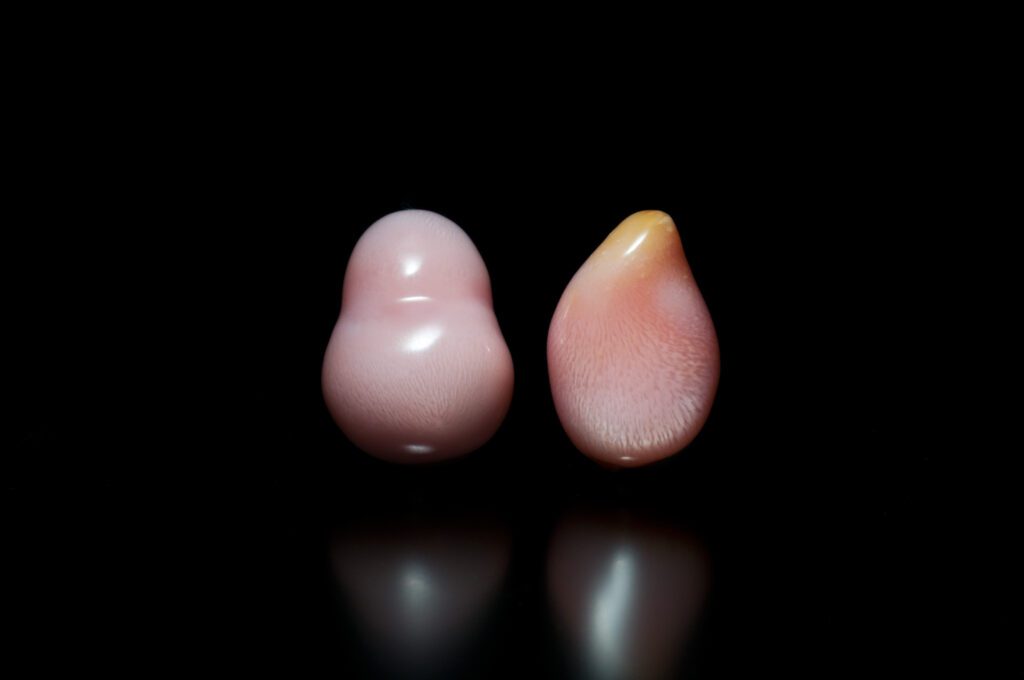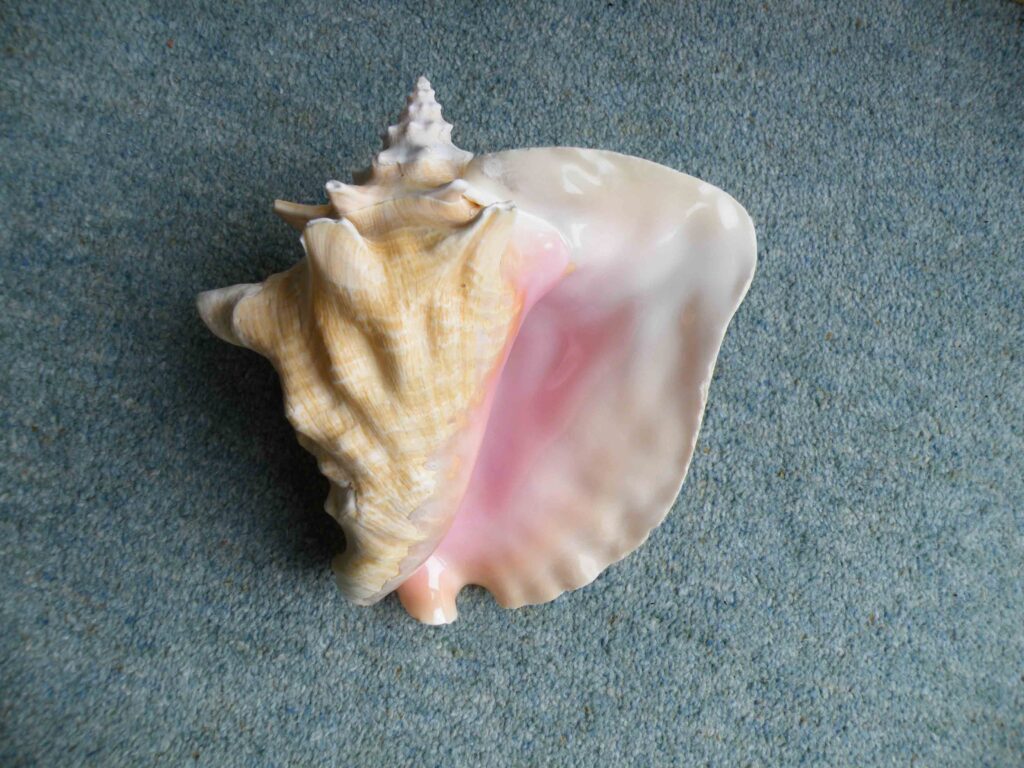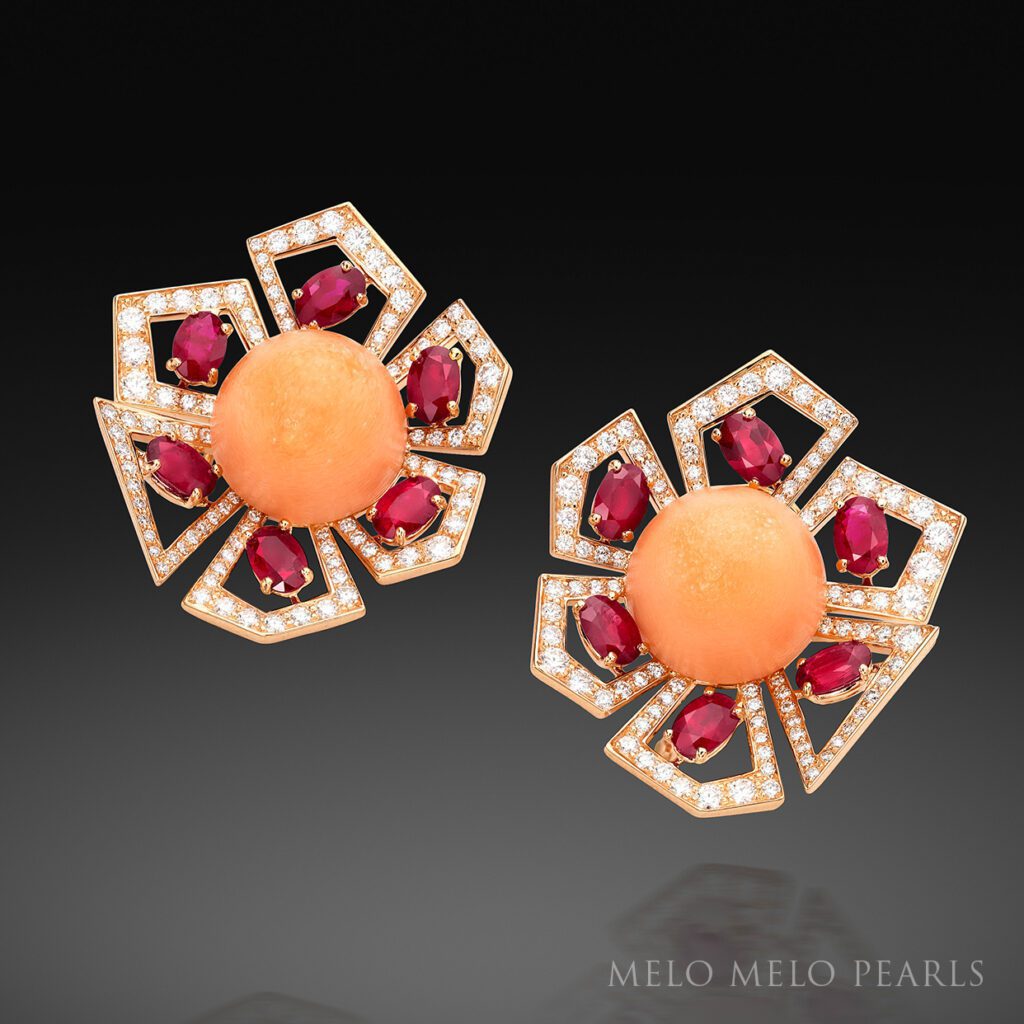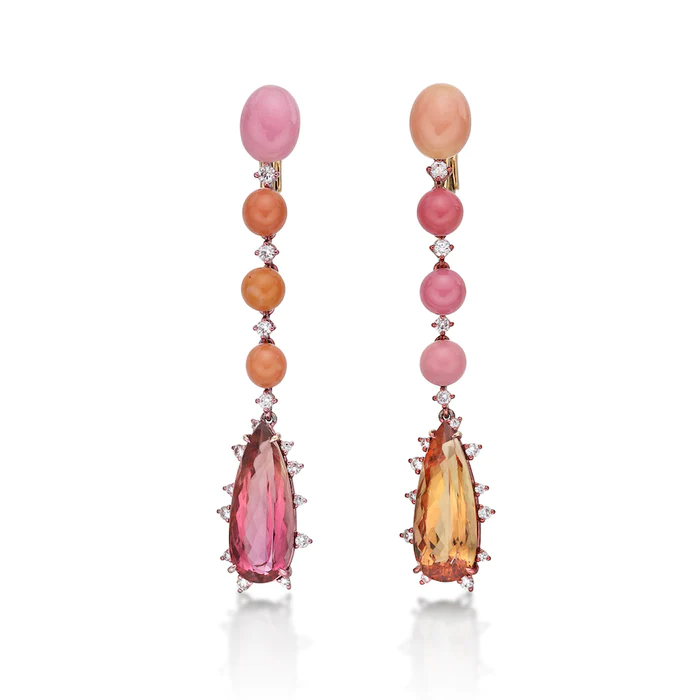
Beginner gemmologists are often surprised to discover how complex and varied pearls can be. What we see lining the shelves of fine jewellery stores are not the only biogenic materials of interest to gemmologists and trade professionals. Gem-A tutor Pat Daly explores non-nacreous pearls in this article, including conch and Melo melo, and takes a closer look at the molluscs that produce these rare aquatic treasures.
Pearls are mineralized concentric structures laid down by shelled molluscs in response to stress. It is not known what starts the process of pearl formation, but once it begins, it continues throughout the animal’s life. Molluscs are a major division of the animal kingdom, a phylum which includes snails, bivalves, the octopus and squid. It may be possible for any of these animals which produce a shell to form a pearl, but sea snails and marine and freshwater bivalves yield commercially useful ones.
Most pearls in the jewellery trade display an orient; they have a silvery reflection, modified by body colour, and a subtle iridescence. The unqualified term pearl refers to natural pearls which have grown without human intervention. If their formation is induced on a pearl farm, for example, they are called cultured pearls. Imitation pearls are not pearls at all; they are beads which are made to look like them.

Cultured Akoya pearls with subtle iridescence, photographed by Pat Daly.
What is nacre?
The silvery to iridescent appearance of most pearls is produced by nacre, a material composed of overlapping plates of aragonite (a type of calcium carbonate). Some molluscs do not secrete nacre, so any pearls they produce do not show these effects. Such pearls depend on their shapes, colours and lustre for their appeal.
Varieties of non-nacreous pearls
Conch pearls are the best-known variety. They are white or brownish to pink, with a bright lustre and a distinctive surface pattern called a flame structure, by which they can be distinguished from beads of coral, which they resemble closely. The queen conch, Aliger (Strombus) gigas, from the Caribbean, is the sea snail from which the pearls are recovered. It has a strong, heavy, coiled pink and white layered shell, up to about 30cm long, which can be cut as cameos. The animal is used for food, and the pearls are a by-product. Overfishing has reduced the population of this species, and efforts are being made to farm it and produce cultured pearls from it. Most pearls are oval rather than round, but higher prices are paid, other factors being equal, for those rare examples which are close to spherical. The largest conch pearl weighs about 80cts, though most are only a few carats in weight.

A conch shell in the Gem-A Archives, photographed by Pat Daly.
Other conch species are sometimes reported to produce pearls, though their rarity means that few studies have been carried out on them.
The baler shell, Melo melo, which has been used to remove water from boats, belongs to another large sea snail. It is an approximately oval shell up to about 30cm long. This animal lives in the Indo-Pacific region and may host orange non-nacreous pearls. Melo pearls are among the largest natural pearls, reaching, in the case of one famous example, about 37mm in diameter and almost 400cts in weight.

A sensational example of Melo melo pearls in a pair of earrings by fine jewellery brand Assael. Photo courtesy of Assael.
Where else can non-nacreous pearls be found?
These two varieties are the most important ones, but pearls are also found in helmet shells of the genera Cassis and Cypraecassis from Indo-Pacific waters, including those used for the carving of most shell cameos. These sea snails have a maximum size of about 40cm and may contain orange to brown or pinkish pearls exceeding 30cts in weight.
All these pearls have ‘flame-like’ markings resembling those of conch pearls, which allow gemmologists to confirm that they are potentially valuable pearls rather than cheaper materials.

The ‘flame-like’ pattern on a conch pearl in the Gem-A Archives.
Non-nacreous pearls are also found in bivalves, the class of aquatic molluscs that are protected and supported by shells composed of two hinged parts. The largest and most dramatic of these are from clams of the genus Tridacna from the Indo-Pacific region, the shells of which range from about 20cm to a metre and a half in the case of the largest giant clams. Pearls can be very large; one baroque (irregularly shaped) example is reported to weigh about 6 kilos, but they are usually white to brown in colour and lack the visual appeal of other non-nacreous pearls. Some so-called pearls have been fashioned from the shells of these animals. These simulants can be recognised by the parallel banding which they display. This kind of banding cannot be seen in pearls, which have a concentric structure. Tridacna pearls have a variant of the flame structure, which ought to be visible on the whole surface; in shell beads, it might be seen on part of the surface but will not be there on all of it.
The genus Pinna, known from warm seas around the world, produces elongate dark-coloured shells, which may be 60 to 80 cm long, and sometimes pearls, which can reach 20 to 30 carats in weight. Most pearls are dark brown to black and non-nacreous, but parts of the shell are lined with nacre, and some pearls may be lustrous to some extent.
The quahog clam, Mercenaria mercenaria, from the seas of eastern North America, yields white and purple shells, which are fashioned as wampum, beads and other traditional items of importance to Native Americans. The animal is used as a food source, and pearls are sometimes discovered in them. They are white to brown and purple to black, they may be round and sizes up to 20 carats or more are reported, though most weigh less than two.

A striking pair of Imperial topaz earrings with conch pearls of various colours by fine jewellery designer, Sarah Ho. Photo courtesy of Sarah Ho.
Several species of scallops from the Atlantic coasts of America and the west coast of Central America have produced white to brown and purple pearls, which may be round and can be 6 mm in diameter. These pearls have been little known in the jewellery trade until recent years, and their rarity makes it unlikely that they will ever be widely appreciated.
How are non-nacreous pearls valued?
Pearls depend for their values on several factors, which include their shapes, colours, surface perfection and size. Oriental pearls possess, in addition, the beautiful appearance of their nacre. The value of a pearl depends on the combination of all of these features. The relative value of different types of pearls is, consequently, hard to express, but an outstanding oriental pearl is likely to command a higher price than a non-nacreous pearl of similar quality. Fine quality non-nacreous pearls of good size may still fetch thousands to tens of thousands of pounds.
How rare are non-nacreous pearls?
Pearls are rare. Estimates of the number of gem-quality non-nacreous pearls recovered vary from one per 50,000 to one per 2,000,000 shells. Most of the animals mentioned above are food sources, and pearls are recovered as a by-product. Lucky diners are sometimes pleasantly surprised to come across a pearl in their dish, and although this is a rare occurrence and most of the pearls are not of gem quality, there are exceptional cases where pieces worth many thousands of pounds have been found.
Main Image: Conch pearls courtesy of Pala International (palagems.com).
…………………………………………………………………………………………….
If you are new in the gem world and wish to know more about gemstones, our mini online course GemIntro is a great way to start! Click here to access


